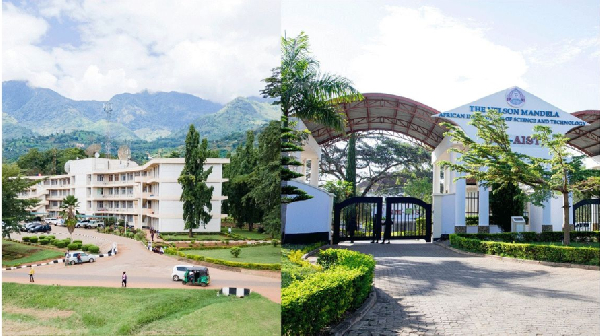Cleanliness Rankings: Key Strategies Behind Tanzania’s Top Universities and Cities in Health and Sanitation

The Ministry of Health in Tanzania has released the results of its 2025 Health and Environmental Cleanliness Competition, spotlighting the leading institutions and municipalities that have demonstrated excellence in sanitation, waste management, and environmental sustainability.
Seven core factors were identified as contributing to the success of top-performing universities and cities. For universities, these included prioritizing hygiene, partnering with professional cleaning companies, implementing structured waste disposal systems, and converting waste into alternative energy. City councils excelled through strategic land use for waste management, public-private partnerships, citizen engagement, and the provision of waste bins in high-traffic areas.
Top Performers: Universities
Out of 19 universities evaluated, the Nelson Mandela African Institution of Science and Technology (NM-AIST) in Arusha claimed the highest score at 93.3%, followed by Sokoine University of Agriculture (SUA) at 89.6% and Catholic University of Health and Allied Sciences (CUHAS) at 84.5%. Other notable mentions include St Augustine University of Tanzania (71.5%) and University of Dar es Salaam (70.5%).
Achiwa Sapuli, NM-AIST’s Health Officer, attributed their success to sustained investment in hygiene infrastructure and a contracted cleaning company. “We recycle wastewater and convert solid waste into biogas. Hazardous waste is managed in specialized facilities,” he explained. NM-AIST also won in 2022 and placed third in 2023.
SUA’s Suzana Magobeko cited leadership collaboration and structured sanitation plans as the main drivers behind their performance. “Sanitation is a top priority, and we are continually working to improve hygiene for students and staff,” she noted.
Top Performers: Cities
Among six cities evaluated, Tanga City Council emerged first with 83.2%, followed by Mbeya City (81.5%) and Arusha City (80.0%). The lowest-scoring cities included Mwanza (79.2%), Dar es Salaam (71.2%), and Dodoma (70.8%).
Tanga City Director Juma Hamsini credited their success to community involvement, prompt response systems, and investment in waste infrastructure. “Citizens send real-time photos of littered areas, prompting immediate cleanups. We also ensure medical waste is properly segregated and disposed of,” he said.
In Mbeya, City Director John Nchimbi said the city had moved from last place in previous years by outsourcing waste collection to SUMA JKT, which brought in new vehicles and improved service delivery. A newly constructed landfill now processes up to 300,000 tonnes of waste weekly. He also praised ward-level leadership for actively educating residents and enforcing hygiene standards.
Sustainability Efforts at UDSM
Professor Bernadetha Kilian of the University of Dar es Salaam (UDSM) emphasized the institution’s long-term sustainability goals. “We leverage our academic departments, such as Botany and Climate Change, to drive campus-wide environmental initiatives. Education and sustainability are at the heart of our strategy,” she said.
Evaluation Criteria
The rankings were based on comprehensive criteria, including solid waste management, access to clean water, wastewater control, toilet sanitation, and the cleanliness of markets, schools, hospitals, public spaces, and burial sites.
The competition highlights the growing importance of environmental stewardship in Tanzania’s development agenda and serves as a benchmark for both public and private institutions nationwide.
Source: Thepressradio.com





